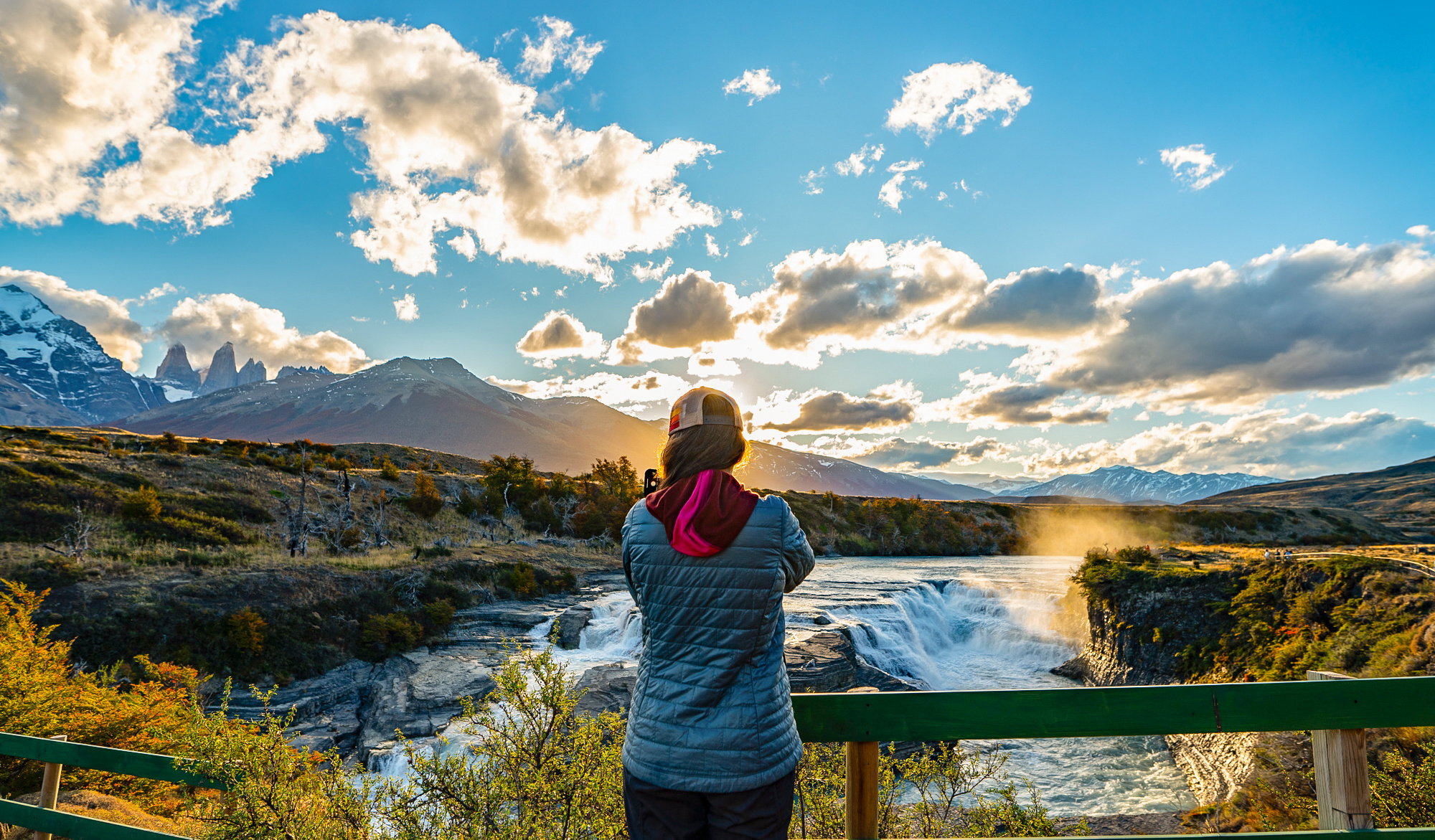How to adapt to the Patagonian climate
Do you dream of seeing the famous Torres del Paine landscapes but are unsure when to go? Wondering which is the best month to visit Patagonia and if it is really as cold as they say? Patagonia, that magical land at the end of the world, piques the curiosity of travelers worldwide. The questions about this destination are endless: Which is the most beautiful region of Patagonia? Is Patagonia really cold? Which is the warmest month? Which is the windiest month in Patagonia? Are three days in Patagonia truly enough to see the main attractions?
This blog will clear up all these questions and give you tips for planning the trip of your dreams to this southern paradise. Get ready to discover Patagonia’s best-kept secrets and plan your adventure to enjoy the weather.
Which is the best month to visit?
We get this question a lot. The answer depends on the type of adventure you seek.
Summer (December to February) is the best option if you prefer warmer adventures. Temperatures range from 5°C to 18°C, and days are longer, with up to 17 hours of sunlight. Unlike winter, summer also brings strong gusts of wind, which offer impressive natural spectacles along the way.
If you want to experience Patagonia in all its intensity and enjoy its autumn and winter landscapes, autumn (April and May) offers a unique experience with vibrant colors and a serene atmosphere. On the other hand, in October and November, snowy horizons and rain enhance the natural beauty, creating a perfect balance between winter retreat and spring’s arrival. During this transition, Patagonian shrubs and trees begin to bloom and the probability of spotting local fauna increases.

What is the most beautiful part of Patagonia?
Torres del Paine National Park offers different sectors where you can enjoy its natural wonders. Some are next to imposing lakes, colossal mountains escort others, and some reveal the vast Patagonian pampa stretching into the horizon.
At Las Torres Patagonia, we have exclusive accommodations in the different park sectors. If being close to colossal mountains is your thing, the Cuernos sector may be your best option. If you prefer to admire the immensity of the Patagonian pampa, Serón will definitely be the place for you. For those looking for an experience with breathtaking lookouts surrounded by forest, Francés is the ideal alternative. If you want to stay near the beginning of the park’s primary trekking circuits, Central gives you the advantage of starting the day on the best trails. To catch the sunrise at Las Torres Base Lookout, you must depart early from the Chilean sector.

Is it really cold in Patagonia? Which is the warmest month?
As we mentioned, the weather in Patagonia depends a lot on the season; however, the weather is primarily cold year-round, particularly in the morning.
In the winter (June - August), some areas can drop to -15 °C. In contrast, summer (December to March) is the “hottest” period, reaching 20 °C on sunny days.
It is important to remember that, even in the summer, Patagonian weather can change from one moment to the next. Wind, rain or snow can appear anytime, so we always recommend that visitors dress in layers and shed individual garments as needed.

Which is the windiest month in Patagonia?
Wind is one of the region’s main characteristics, particularly within Torres del Paine National Park. The strongest gusts, which can exceed 100 km/h, usually occur between November and January. They can make some hikes more challenging, so it is important to bring appropriate clothing and trekking poles and come prepared for strong drafts.
If the wind creates a lot of resistance, we recommend crouching until it dies down. The powerful gusts usually subside quickly, allowing hikers to continue on their way.

Are three days in Patagonia enough?
Torres del Paine National Park offers a tremendous diversity of natural wonders. Even on the O Circuit, a 9-day excursion, corners will always be left unexplored. However, for your first time in the park, a three-day stay, such as the W Express Circuit, is an excellent option to start your adventure and fall in love with Patagonia.

Can you explore Patagonia alone?
Hiking the trails through Torres del Paine National Park on your own can be a unique experience, allowing you to connect with nature more personally, go at your own pace and stop as long as you like to admire the scenery.
Notably, the trails are self-guided. The signage in the park tells you which direction to take for each destination, making it easy to follow the path at your own pace.
However, sound planning is essential. Information about routes, weather and supply points is key. If you are traveling alone, bring good equipment, share your itinerary with someone and follow the rangers’ recommendations for a safe and memorable experience.



.jpg)
.jpg)